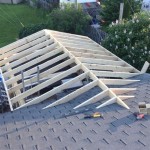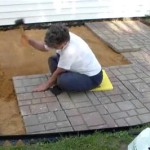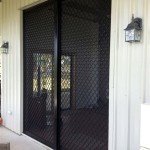How to Raise a Concrete Patio
A concrete patio is a durable and attractive addition to any home, providing a versatile outdoor space for entertaining, dining, or simply relaxing. However, time and weather can take their toll, leading to uneven surfaces, cracks, and other issues that diminish the patio's functionality and aesthetics. If your concrete patio has sunk or settled over time, raising it can restore its level and enhance its appearance. This guide will outline the necessary steps for raising a concrete patio effectively and efficiently.
1. Assessment and Preparation
Before embarking on the raising process, a thorough assessment is crucial. This involves identifying the extent of the sinking or settling and determining the underlying causes. Here are some steps to consider:
-
Inspect the Patio:
Observe the patio for any visible signs of sinking, such as unevenness, gaps between slabs, or areas that are lower than others. -
Check for Drainage Issues:
Verify that the surrounding ground slopes away from the patio, preventing water from pooling and eroding the soil beneath. -
Assess the Foundation:
Determine the type of foundation beneath the patio. If it's a gravel base, examine its condition for compaction and drainage. If it's a concrete base, check for cracks or movement. -
Measure and Mark:
Use a level to identify the areas that need lifting and mark them for reference. This will help you ensure consistent lifting across the entire surface.
After completing the assessment, focus on preparing the work area.
-
Clear the Patio:
Remove any furniture, plants, or debris from the area where you will be working. -
Protect Surrounding Surfaces:
Cover nearby landscaping, walkways, or structures with drop cloths or plastic sheeting to prevent damage from spills or debris. -
Gather Necessary Materials:
Acquire the required materials for raising the patio, which may include leveling compound, concrete mix, polyurethane foam, or leveling jacks.
2. Lifting and Leveling Techniques
The method for raising a concrete patio depends on the severity of the sinking and the underlying foundation. Here are common approaches:
2.1. Leveling Compound
For small dips or unevenness, leveling compound is a convenient and cost-effective solution.
-
Prepare the Surface:
Clean the affected areas thoroughly to remove dirt, debris, and loose material. -
Mix the Compound:
Follow the manufacturer's instructions for mixing the leveling compound with water. -
Apply the Compound:
Spread the mixed compound onto the low spots, ensuring an even layer. -
Level and Smooth:
Use a trowel or straight edge to level and smooth the compound to create a uniform surface. -
Cure and Seal:
Allow the compound to cure completely according to the manufacturer's recommendations. Consider sealing the patio with a sealant to protect it from moisture and UV rays.
2.2. Polyurethane Foam
Polyurethane foam is a versatile option for lifting and leveling areas that have sunk significantly. Its ability to expand and fill voids makes it suitable for uneven surfaces and cracked areas.
-
Clean and Prepare:
Thoroughly clean the affected areas and ensure they are free of dust and debris. -
Apply the Foam:
Use a foam dispensing gun to inject the polyurethane foam into the voids beneath the patio slabs. -
Expand and Cure:
Allow the foam to expand and cure, following the manufacturer's instructions. The expansion will gradually lift the patio.
2.3. Concrete Mix
For larger areas or more severe sinking, using a concrete mix may be necessary. This approach involves filling voids with concrete to provide structural support.
-
Excavate the Area:
Dig out the soil beneath the sunken areas to create a space for the concrete mix. -
Prepare the Formwork:
Construct a formwork using plywood or other materials to create a mold for the concrete. -
Mix and Pour:
Mix the concrete according to the manufacturer's guidelines and pour it into the formwork. -
Level and Finish:
Level the concrete surface and finish it with a trowel or screed to create a smooth and even surface. -
Cure and Protect:
Allow the concrete to cure completely, usually for several days, then seal it to protect it from weather damage.
2.4. Leveling Jacks
Leveling jacks are hydraulic devices that provide a precise lift for concrete slabs. They are often used to raise patios that have undergone significant settling or sinking.
-
Prepare the Surface:
Clean the areas where the jacks will be placed and ensure they are level. -
Install the Jacks:
Position the leveling jacks strategically beneath the patio slabs and secure them firmly. -
Raise the Slabs:
Pump the jacks to raise the slabs gradually, monitoring the level and ensuring a consistent lift. -
Secure and Level:
Once the slabs are at the desired level, tighten the jacks to secure them. Double-check the level of the patio to ensure it is even.
3. Maintenance and Prevention
After raising the patio, it's important to implement maintenance practices to prevent future sinking or settling.
-
Regular Inspection:
Periodically inspect the patio for any signs of movement or cracking. Early detection allows for timely repairs and minimizes potential damage. -
Drainage Management:
Ensure the surrounding ground slopes away from the patio to prevent water from pooling and eroding the soil beneath. Maintain drainage systems and gutters to divert rainwater away from the patio. -
Sealing and Protection:
Seal the concrete patio with a sealant to protect it from moisture, UV rays, and freeze-thaw cycles. This helps to prolong its lifespan and maintain its appearance.

How To Build A Raised Patio

How To Build A Raised Concrete Porch Aaa Raising

Patio Lifting Leveling Repair Concrete Hero

Diy Mudjacking How To Raise A Concrete Slab

How To Build A Raised Patio With Retaining Wall Blocks

How To Build A Raised Paver Patio

Avoiding Disaster Through Proper Design Of A Raised Paver Patio

Wicked Old School Raised Patio Klassen Concrete Designs Stairs

Frost Proof Concrete Patio Build Part 1

Raising A Concrete Patio Using The Easiest Solution
Related Posts








